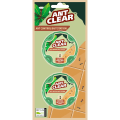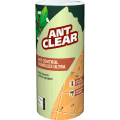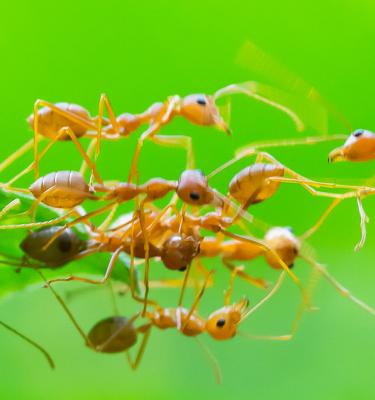

How to Get Rid Of Ants
What are ants?
Ants are both a gardener’s friend and foe. Garden ants are more of a nuisance than a real problem and they rarely damage plants directly. Ants in the house are unwelcome visitors. The lifespan of a queen ant is up to 15 years.
Of the 11,000 species of ants in the world, about 50 species can be found in the United Kingdom. Here are the three most common types of ants found in gardens in the UK:
Black garden ant (Lasius niger)
This is perhaps the most familiar ant due to the tendency in the summer for the 3mm long black worker ants to enter the house searching in kitchens for food such as sugar, fats and grains. Its nests can be found on patios and along the edges of lawns. Colonies can consist of up to 15,000 workers, although the average is about 4,000 to 7,000. Black ants eat insects, nectar, and even the bodies of dead ants from their own or other colonies. You’ll most likely see them in late summer during hot and humid weather when the brownish black winged adults swarm and mate. These are the 'flying ants' dispersing to form new colonies.
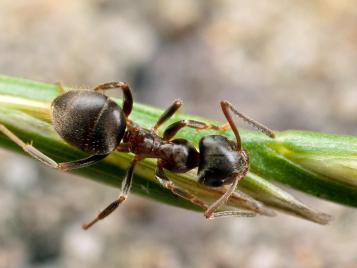
Yellow meadow ant (Lasius flavus)
Another common ant found in gardens, these small ants measuring 2-4mm build small mounds in our lawns which can get in the way of mowers and make the lawn uneven. They build much larger mounds in fields and meadows. They are often mistaken for red ants due to their reddish/yellow colour, yet they are no more harmful than the black garden ant. They protect the larvae of the chalkhill blue butterfly in return for a sugary substance secreted by the larvae. Yellow meadow ants forage below ground feeding on small insects and mites that stray into their tunnels and are not often seen, except perhaps when their nests are disturbed, or during the annual mating flights.
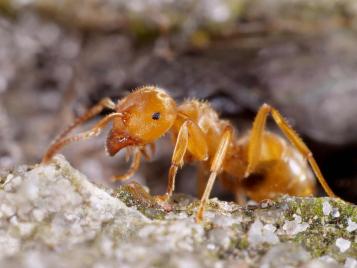
Red ant (Myrmica rubra)
These 4-6mm long ants are a reddish brown colour and can deliver a relatively painful sting. Commonly found under stones and logs in the garden, and also in soil and lawns, they are active throughout the year.

Ant damage and symptoms
- Ants’ nests. You often see their nests before you spot the ants in the garden. The nests contain the ant colonies. During cool winter months ants are dormant and sleep in the nest. As the weather warms up they become active and leave the nest searching for food. In late summer you may see swarms of flying ants: the fertile male and female adults. After mating, the males die and the pregnant females become the new queen ants. They leave their original nest in search of a suitable site to establish a new nest of their own. The queen ant lays a few eggs in soft soil, which she will then rear herself. These are her first worker ants which will help build and run the nest once mature.
- Ant activity on lawns and flowerbeds. A tell-tale sign that an ants’ nest is present are fine heaps of soil on lawns or in flower beds, where the worker ants deposit the soil excavated from the underground nests they are building for the queen ants. As well as interfering with mowing, these can partly bury low growing plants. Large ants’ nests may also expose the root systems of plants to the air causing the roots to dry out and the plants to wilt.
- Aphid farming. Some ants ‘milk’ aphids for their sugary honeydew, and protect aphids by driving off their predators such as ladybird larvae. This can cause increased populations of aphids and more damage to plants.
Ant control and treatment
Are you wondering how to get rid of ants in the house and in the garden? Here we’ve listed a few different ant pest controls, ranging from cultural and biological to chemical. All the suggestions aim to get rid of the ants’ nests, but ant controls should be used only where the nests are causing a real problem.
Ants in the house
- Sprinkle ant granules where you see ants in the house. The ants take the sugary granules back to the nest, destroying the entire colony.
- Spray with an ant stop spray insecticide which can be used on cracks and crevices on indoor and outdoor walls where ants travel.
- Install an ant trap next to ants’ nests or runs. Worker ants collect bait from the ‘bait station’ and take it back to the nest where they share the bait with other ants in the nest, including the queen ant.
Ants in the garden
- If you’re planning to mow the lawn and you find ants nests in the form of little heaps of excavated soil on the lawn, brush them off. It’s better to do this when the weather is dry to save the soil getting smeared across the lawn by the mower.
- Inspect your lawn to see if years of ant activity have made the surface uneven. If so, peel back the turf where this has happened, remove the excess soil and re-lay the turf. It’s better to do this in winter when the ants are not active.
- If the ants are really troublesome, pour boiling water on the site of the ants’ nest.
- To get rid of ants naturally, water Steinernema feltiae onto the places where the ants are bringing soil up to the surface of lawns and flowerbeds. These are tiny worm-like nematodes and are available from suppliers of biological controls.
How to prevent ants
It is thought that the strong scent of garlic and mint act as an ant deterrent, so try growing these herbs in pots near where you have seen ant activity in the past. It’s not possible to prevent ants establishing themselves in the garden and because ants do not eat plants and are more of a nuisance than a destructive pest, it is often better to tolerate them. They are useful creatures because they feed on organic waste or other insects. By eating the honeydew secreted by aphids, they sometimes prevent the formation of sooty mould on the leaves onto which the honeydew falls.
Unless nests are causing damage to the lawn or flowerbeds, it is better not to disturb ants. Where a colony is destroyed, new queen ants may take over the territory and establish even more new nests.
